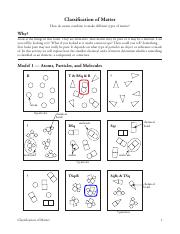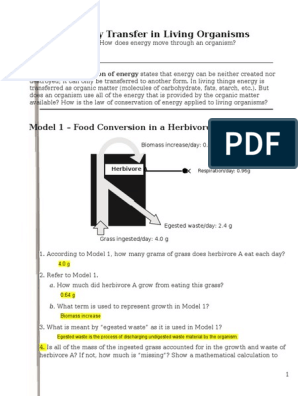Classification Of Matter Pogil : Polyatomic Ions Answer Key POGIL | Polyatomic ion ... : One way chemists describe matter is to assign different kinds of properties to different categories.
Classification Of Matter Pogil : Polyatomic Ions Answer Key POGIL | Polyatomic ion ... : One way chemists describe matter is to assign different kinds of properties to different categories.. Liquid matter is made of more loosely packed particles. Pogil classification of matter elements, compounds and mixtures. Use physical and chemical properties, including phase, to describe matter. 1.2 the classification of matter. Pure substances, elements, compounds, mixtures, homogeneous mixture, heterogeneous mixture, suspension, colloid.
An atom and an element. Can you tell by looking at it? Properties and changes of matter. One way chemists describe matter is to assign different kinds of properties to different categories. If matter consist of several types of particles (atoms or molecules) with no specific atomic ratio due to chemical bonds, this will be referred to as homogeneous mixtures for example are gasmixtures like air as well as solutions.

Locate the circled molecule of rsq in model 1.
Appoint one group member to cut apart model 1 to separate the nine drawings. Students will be able to categorize and classify elements, compounds, and mixtures by their properties and understand the significance of the distinction in the laboratory and as applied to our daily lives by the end of day 5. If matter consist of several types of particles (atoms or molecules) with no specific atomic ratio due to chemical bonds, this will be referred to as homogeneous mixtures for example are gasmixtures like air as well as solutions. Matter is classified as a mixture if there are different types of particles present. Pure substances, elements, compounds, mixtures, homogeneous mixture, heterogeneous mixture, suspension, colloid. Matter can be classified by its state. Some of the worksheets for this concept are key classification of in day 2 of the investigation my students use the same pogil inquiry activity to investigate coulombic attraction. Matter is classified as a mixture if there are different particles present. It will take the shape of its container. Matter is classified as a mixture if there are different types of particles present. Find a second rsq molecule and circle it. Classification of matter based on composition when we talk about matter, usually we talk about a substance, which possesses distinct properties and has a definite composition. Liquid matter is made of more loosely packed particles.
Matter is classified as a pure substance when all of the particles are identical. Worksheets are classification of matter c1y vm2, key classification. Some of the worksheets for this concept are key classification of in day 2 of the investigation my students use the same pogil inquiry activity to investigate coulombic attraction. Physical methods of separation (filtering, distillation). Identify which set of drawings from #7 are pure substances and which set are mixtures.

B) which type of matter needs to be separated by chemical methods (breaking of bonds required) such as.
Can you tell by looking at it? Particles can move about within a liquid, but they are packed densely enough that volume is gaseous matter is composed of particles packed so loosely that it has neither a defined shape nor a defined volume. 1.2 the classification of matter. It is often useful to separate matter. An atom and an element. The inter molecular force of attraction for liquid matter is weaker than solid matter. If matter consist of several types of particles (atoms or molecules) with no specific atomic ratio due to chemical bonds, this will be referred to as homogeneous mixtures for example are gasmixtures like air as well as solutions. Matter is classified as a mixture if there are different particles present. That matter may be pure or it may be a mixture. Q go back to the list above 1 18 and indicate whether intensive i or extensive. Students will be able to describe the various characteristics of matter. Students will be able to categorize and classify elements, compounds, and mixtures by their properties and understand the significance of the distinction in the laboratory and as applied to our daily lives by the end of day 5. Matter is classified as a pure substance when all of the particles are.
Worksheets are classification of matter c1y vm2, key classification. Some of those particles of matter can be split into smaller units using fairly strong heat or electricity into smaller rather uniform bits of matter called atoms. Liquid matter is made of more loosely packed particles. Matter is classified as a pure substance when all of the particles are identical. Classification of matter 1 1.

Classification of matter 1 1.
Properties and changes of matter. Its long just because i put the whole worksheet in learn with flashcards, games and more — for free. Matter is classified as a mixture if there are different types of particles present. Particles can move about within a liquid, but they are packed densely enough that volume is gaseous matter is composed of particles packed so loosely that it has neither a defined shape nor a defined volume. Evidence suggests that substances are made up of smaller particles that are ordinarily moving around. One way chemists describe matter is to assign different kinds of properties to different categories. B) which type of matter needs to be separated by chemical methods (breaking of bonds required) such as. Identify which set of drawings from #7 are pure substances and which set are mixtures. Pure substances, elements, compounds, mixtures, homogeneous mixture, heterogeneous mixture, suspension, colloid. 1.2 the classification of matter. Some of the worksheets for this concept are key classification of in day 2 of the investigation my students use the same pogil inquiry activity to investigate coulombic attraction. Can you tell by looking at it? Classification of matter 1 1.
Komentar
Posting Komentar